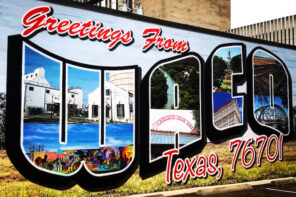In 1969, the murders committed by Charles Manson and his “family” convinced many that just under the surface of the hippie counterculture lurked a network of criminal Satanism. Every flower child in the country became a potential Manson, ready to commit an act of ritualistic violence in the name of a deviant spirituality—and Manson’s legacy persisted through the Satanic Panic of the ’80s, his name invoked as a reminder of the threat of devil-inspired crime.
Mexico may have experienced its own “Manson moment” last month when eight devotees of “Santa Muerte” were arrested for the murder of three people, allegedly as human sacrifices. While the media has been fairly restrained in covering this event, these murders will likely have lasting consequences for alternative religion in North America. Like the Manson murders, the Santa Muerte murders present a concrete instance of violence that can be used to support much broader claims about the dangers of the religious and cultural Other.
In Mexican folk tradition, Santa Muerte or “Saint Death” is portrayed as a skeletal woman, often wearing a white cloak or a wedding dress. She claims devotees among all walks of life, but her help is especially sought by the very poor as well as narcos or drug cartels.
Spanish records suggest prayers were offered to Santa Muerte as early as the eighteenth century, but in the last ten years, devotion to Saint Death has grown exponentially, fueled in part by the fear and anxiety created by Mexico’s escalating drug wars. Gifts of flowers, candy, alcohol, and tobacco are often left at shrines to Santa Muerte. There have been rumors of human sacrifice only in the last few years and these have (until now) been unsubstantiated.
On March 6, Jesus Octavio Martinez Yanez, 10, was reported missing from the town of Nacozari, Mexico, near the Arizona border. Investigators discovered an altar to Santa Muerte and forensics revealed traces of blood spread over thirty square meters around the altar.
On March 28, authorities searched the home of Silvia Meraz, whose house had already been under surveillance for suspected prostitution. Inside, they found the body of the missing child buried under the floorboards in the bedroom of one of Meraz’s daughters. Members of Meraz’s family then led authorities to two more graves. Here, they discovered the remains of Martin Rios, 10, who had been missing since July 2010, as well as Cleotilde Romero, 55, missing since 2009.
All three victims were allegedly killed as offerings to Santa Muerte in exchange for supernatural aid and protection. The family has no apparent ties to drug cartels and it is unclear if anyone acted as the leader in organizing the murders.
Catholic Church authorities have condemned devotion to Santa Muerte as diabolic. The Mexican government has destroyed shrines to Saint Death in an attempt to suppress narco culture. In the United States, “occult crime experts” have implied that Santa Muerte is linked to ritualistic violence. Awareness of Santa Muerte has also fused with anti-immigration sentiments, giving rise to fears of “criminal gangs motivated by bloodlust and kinky spiritualism.”
Last month’s grisly discovery would seem to validate claims that Santa Muerte represents a dangerous criminal movement. But are the tragic deaths in Nacozari an index of future religious violence? Is everyone who wears Nike’s Santa Muerte sneakers a potential murderer?
In sociology, “convergence” refers to the linking of two disparate things, creating an unwarranted parallel between them. An isolated but critical event (like a murder) gets linked in the public mind to a widespread phenomenon (like an outsider religious movement). The result is moral panic.
We’re seeing evidence of this exact link in English-language news coverage of these murders.
In court, Meraz claimed she had only been a follower of Santa Muerte for about two years; the beliefs of her group were not rooted in a larger tradition of devotion to Santa Muerte. Furthermore, everyone implicated in the murders is a member of the same family (one suspect is only 15).
But the group has consistently been described as a “cult,” implying an organized religious movement. State police took this a step further by referring to Santa Muerte as a “Satanic sect.” (Devotees of Santa Muerte are not Satanists and many consider themselves to be Catholic.)
Finally, an Associated Press article has compared these murders to those committed by Adolfo de Jesus Constanzo, a cartel leader who practiced a variety of esoteric traditions. In 1989 a number of bodies were discovered at Constanzo’s ranch in Matamoros, Mexico, some of whom had apparently been killed as sacrifices. The Matamoros murders were themselves connected to Charles Manson by conspiracy theorists attempting to prove the existence of a vast network of criminal Satanism.
The effect of all these connections is to mold specific incidents into a monolithic danger that spans across decades, national borders, and religious traditions.
It goes without saying these murders are unconscionable, and a tragedy. But attempting to find a grand pattern, or a reason, in a connection to so-called ritualistic violence brings authorities no closer to preventing such crimes—while greatly increasing the likelihood that innocent people will be persecuted.
It is almost a certainty that at some point in the future the events that have unfolded in Nacozari will be presented as “proof” that Santa Muerte is an inherently violent tradition. As Saint Death’s popularity spreads and the Latino American population continues to grow, this is not a theory we can afford to entertain.
If we can accept that not all Beatles fans are Charles Manson, we must also have faith that not all who pray to Santa Muerte are Silvia Meraz.




